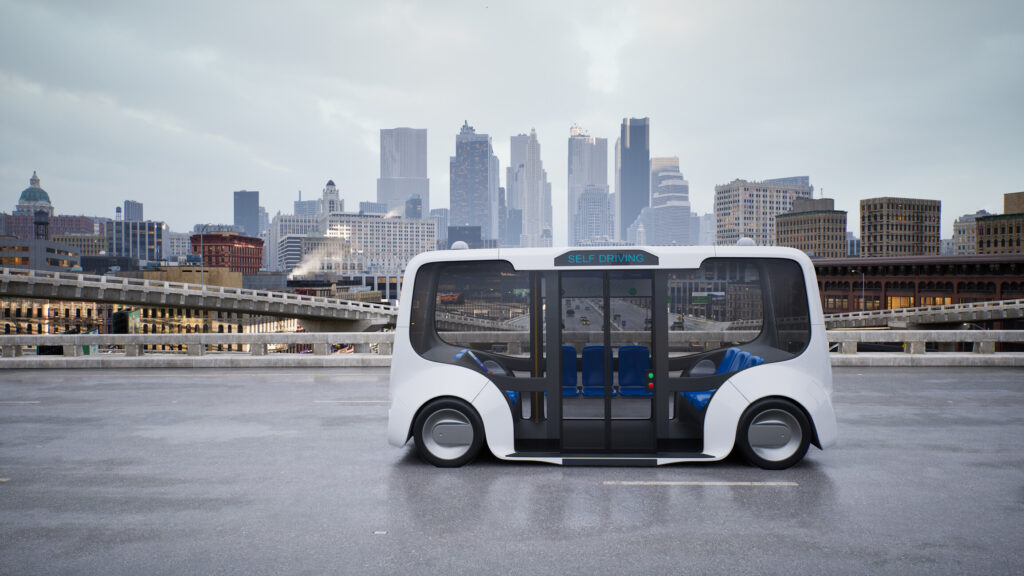Autonomous vehicles (AVs) are reshaping the future of urban mobility by offering an innovative complement to public transportation systems. Their integration promises to enhance efficiency, reduce congestion, and expand accessibility, addressing key challenges faced by modern cities.
One of the most significant benefits of integrating autonomous vehicles with public transportation is the potential for seamless first-mile and last-mile connectivity. Traditional public transit systems, such as buses and trains, often struggle to provide door-to-door service, leaving gaps in coverage. Autonomous shuttles and ride-sharing services can bridge these gaps, transporting passengers to and from transit hubs efficiently. These AVs operate on-demand, reducing wait times and increasing convenience for commuters.
Another advantage lies in optimizing route planning and service frequency. AVs equipped with advanced AI algorithms and real-time data processing can dynamically adjust their routes based on demand, traffic patterns, and weather conditions. This adaptability ensures that resources are deployed where they are most needed, minimizing delays and reducing operational costs. For instance, autonomous buses can switch from high-capacity routes during peak hours to less frequent services in low-demand areas, ensuring efficient utilization of vehicles.
The integration of autonomous vehicles can also significantly reduce traffic congestion. With interconnected systems and vehicle-to-infrastructure communication, AVs can coordinate their movements to avoid bottlenecks and optimize traffic flow. In a mixed transit model, where autonomous cars and buses share the road with human-driven vehicles, AVs can predict and adapt to traffic patterns, prioritizing the movement of mass transit vehicles. This coordination not only speeds up travel times but also contributes to lower emissions by reducing idle times and unnecessary stops.
Accessibility is another area where autonomous vehicles can make a profound impact. AVs have the potential to provide mobility solutions for underserved populations, including the elderly and people with disabilities. Autonomous shuttles with features like wheelchair ramps, voice-controlled navigation, and real-time assistance can make public transportation inclusive and equitable. By addressing mobility challenges, AVs can help cities achieve broader social and economic goals.
Cost-efficiency is a critical factor driving the adoption of autonomous vehicles in public transportation. Without the need for human drivers, AVs reduce labor costs significantly. Moreover, their predictive maintenance systems, powered by IoT sensors and machine learning, extend vehicle lifespans and reduce downtime. These cost savings can be reinvested to improve transit infrastructure and expand service coverage.
However, the integration of autonomous vehicles into public transportation is not without challenges. Ensuring the safety and reliability of AVs is paramount, as public transit systems cater to large volumes of passengers. Rigorous testing, robust cybersecurity measures, and regulatory oversight are essential to mitigate risks associated with AV deployment. Additionally, the coexistence of autonomous and traditional vehicles requires clear rules and frameworks to avoid conflicts on shared roadways.
Another concern is the potential displacement of jobs in the transit sector. While AVs reduce the need for drivers, cities must address the socioeconomic implications by investing in retraining programs and creating new opportunities in the growing field of autonomous technology management and maintenance.
As autonomous vehicle technology matures, collaboration between governments, transit agencies, and private companies will be crucial for successful integration. Public-private partnerships can fund pilot programs, establish standardized protocols, and ensure interoperability between autonomous systems and existing transit networks. Furthermore, urban planners must prioritize infrastructure upgrades, such as dedicated lanes and smart traffic signals, to support the smooth operation of AVs.
In the long term, the integration of autonomous vehicles into public transportation systems has the potential to transform urban mobility. By enhancing connectivity, reducing congestion, and improving accessibility, AVs can make public transit more efficient and sustainable. With thoughtful planning and collaboration, autonomous technology can pave the way for smarter, greener cities that cater to the mobility needs of all residents.
From Our Editorial Team
Our Editorial team comprises of over 15 highly motivated bunch of individuals, who work tirelessly to get the most sought after curated content for our subscribers.


